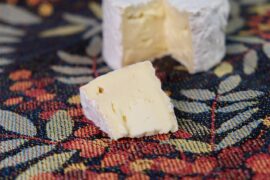Acidity contributes freshness and structure to wine. Wine contains two types of acids: fixed (or stable) and volatile. Fixed acids are ones that remain in a liquid when it’s boiled, while volatile acids readily evaporate. We sense wine’s fixed acids texturally, and its volatile acids aromatically.
The fixed acids in wine are tartaric, malic, lactic, citric, and succinic. These acids give a wine structure and zing.
Wine’s volatile acids are acetic, butyric, formic, isobutyric, propionic, hexanoic, sorbic, and sulfurous. These volatile acids are present in smaller quantities than the fixed acids.
The most important volatile acid in wine is acetic acid. It’s the same acid in vinegar but there’s far less of it in wine. Acetic acid a byproduct of yeast fermentation but also of oxidation; aged wines have more of it.
Below the perception threshold of about 1.2 g/L, acetic acid puts a shiny polish on the wine’s aromatic profile. When acetic is present at very high concentrations, and especially in combination with another volatile compound, ethyl acetate, the wine is regarded as having elevated volatile acidity.
« Back to Glossary Index


